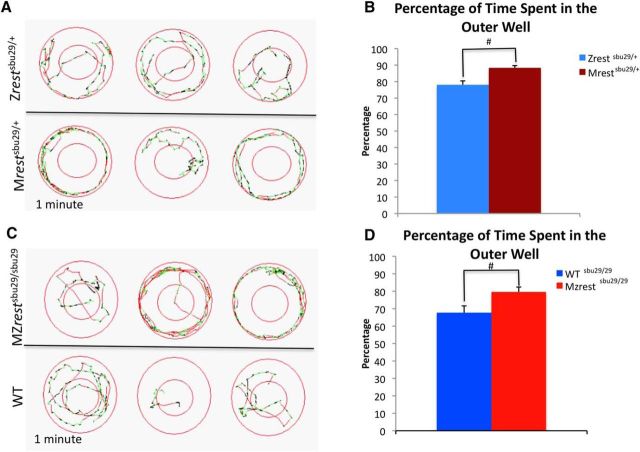Figure 5.
Larvae lacking maternal rest show an atypical spatial preference at 6 dpf. A, C, Representative locomotion diagrams of movement in 1 min. Mrestsbu29/+ (A) and MZrestsbu29/sbu29 (C) larvae display a preference for the outer well. Green represents small velocity movements. Red represents large velocity movements during a spontaneous locomotion assay in the light. B, Quantification of percentage of time spent in the outer well over 15 min shows that Mrestsbu29/+ (n = 71) larvae spend significantly more time in the outer well compared with Zrestsbu29/+ (n = 72) (p = 0.002). D, Quantification of percentage of time spent in the outer wall over 15 min reveals that MZrestsbu29/sbu29 (n = 48) larvae spend more time in the outer well compared with related WT controls (n = 72) (p = 0. 0307). Significance was defined using a Student's t test. #p < 0.05.

